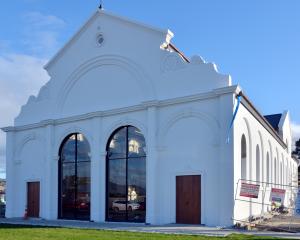Port Otago's continued efficient operation was ``essential to the economic health'' of Otago, a Dunedin resource consent hearing was told yesterday.
Barrister Len Andersen made that point at the hearing, at Otago Regional Council premises.
Dredging the shipping channel and associated areas and being able to dispose of the dredging spoil were also essential to Port Otago's operation of the ports at Port Chalmers and Dunedin, Mr Andersen said in his submission for the company.
The port company was now seeking a new 25-year consent term to ``use optimum inshore disposal grounds'' for the spoil, he said.
The hearing is before commissioners Dr Brent Cowie and Hugh Leersnyder.
Extensive modelling showed there would be no adverse environmental effects, including on surf breaks and the sea-bottom biological community, Mr Andersen said.
``Monitoring and adaptive management procedures'' were allowed for in the conditions, to respond to any ``unexpected effects''.
The company's evidence was that there were ``beneficial effects to Shelly Beach and Aramoana Beach'' through disposing of spoil in those areas.
With Shelly Beach, the land to the spit was nourished, and the spoil disposal also helped reduce erosion of the sand dunes and the near shore.
The design brief for the Heyward Point disposal ground was for it to be able to take 1.5 million cu m of spoil every five years, an annual average of 300,000 cu m.
And Port Otago needed reserve capacity in case of a ``major event such as a collapse of the channel entrance, requiring immediate work''.
A key consideration had been surf breaks at Aramoana and Whareakeake, which were protected under the New Zealand Coastal Policy Statement, Mr Andersen said.
The hearing was told that spoil-related consent was sought for a maximum of 50,000 cu m of clean sand per year for Shelly Beach and a maximum rolling average of 100,000 cu m for Aramoana, calculated over a five-year period.
And there was a maximum of 300,000cu m for Heyward Point and Aramoana, also calculated through a five-year average.
It was proposed that the maximum overall disposal in any one year be 450,000 cu m at all three sites.
The second phase of Port Otago's $30million ``Next Generation'' dredging project, to widen and deepen the 13km shipping channel between Taiaroa Head and Port Chalmers, is under way.
Giving evidence for the company, civil engineer and former Port Otago chief executive Rene Bakx emphasised Port Otago's economic significance.
A 2009 study showed the port injected $85million into the Otago economy and provided 480 jobs. Its economic impact had since risen significantly, given that net container volumes were since up 15%, conventional shipping volumes were up 22% and cruise ships were up 64%.
Port Otago was New Zealand's second-largest meat-exporting port and the ``international gateway'' for important exports.
And Port Chalmers was one of the few New Zealand ports readily able to be upgraded for the new generation of bigger vessels. It was essential for Dunedin and the lower South Island that Port Otago remained a strong part of the country's ``international trading supply chain''.
Continued maintenance dredging was needed to ensure the gains made through ``development dredging'' were not lost, he said.
The hearing continues today.
Advertisement













